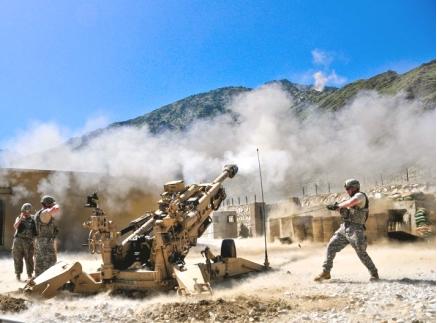Shift in Theological Landscape in Afghanistan
BY Herschel SmithFrom The Guardian comes what I see as a very important story, one that goes well beyond anecdotal stories about children, schools, the treatment and women, and the brutality of the Taliban – although those elements stand out as well.
This week’s Guardian article about an alleged poisoning incident at a girls’ school in Kabul reminded me of a similar incident during the Soviet occupation. I was at primary school and remember watching girls being carried over to an adjacent hospital.
The rumour that later spread at school explained the incident as follows: one of the pupils, from a family of mujahideen sympathisers, had poisoned the school’s well in protest against the communist-inspired syllabus. The story sounded plausible at the time, in the absence of free media, reliable investigation or international witnesses offering a different, perhaps more objective, take on it.
The parents’ reaction was pragmatic. The following day, pupils returned to school, carrying plastic flasks filled with water from home. But this response did not mean parents supported the government. It was true that the syllabus was inspired by communist ideology. But there was a way around that, too. Children simply learned to differentiate between useful scientific knowledge and political propaganda. To receive an education, Afghans – then as now – had no choice but take the risk of exposing children to state propaganda and its spin-off, insurgent violence.
The two incidents – with the water and the “poison gas” – are separated by decades but their similarity makes it tempting to repeat the old cliche that nothing changes in Afghanistan. But in some ways they are strikingly different, revealing profound changes in three decades of conflict and the way it is perceived.
The key difference is that in the old story the conflict was neat, involving two clearly opposite sides: a communist regime of non-believers versus an Islamist resistance of believers.
In the new story, all parties involved in the perceived incident are believers, including the Islamic Republic that is responsible for the school, the pupils who attend it and the perpetrators who allegedly carried out the attack.
Another striking difference between the two stories relates to the gender issues. The old story had a female protagonist who was a school insider. In the current story, by contrast, girls appear only as victims and the perpetrator is perceived to be an outsider. We can assume that the girls of my school were still able to sympathise with the mujahideen, since they had never lived under their command. But the current generation of schoolgirls knows better and there has been no suspicion of an insider act carried out by a girl. These differences are subtle but reveal shifts in the emotional landscape of the people, and the way they relate to the present conflict.
Judging by the parents’ reaction to the current story, ordinary Afghans expect the Taliban to break all sorts of traditional religious taboos, including the ban on violence during the month of Ramadan. The parents’ reasoning is plausible. After all, a serious taboo such as suicide has been reinterpreted and reintroduced as an act of piety without apparently raising a single eyebrow in Kabul or beyond. Judging by such precedents, Ramadan, too, could have been reinterpreted without notice and declared a month in which jihad by violent means carried on.
Be that as it may, what we see is theological chaos and various conflicting interpretations of Islam vying for power and influence in Afghanistan. The result is an Islamic Republic in charge of a Muslim people, which is under attack by an Islamist insurgency.
Little wonder, then, that parents of Totia school girls have been left wondering who is representing Islam, and who defaming it. But this type of chaos is an expected outcome when Muslim states lose control over religion. Faced with the Taliban, the old mujahideen who are in power now are getting a taste of their own medicine. After all, they too had once used Islam to legitimise violence against civilians, schoolchildren included.
Another striking difference between the two stories is content related. In the old story, the poison incident was explained as an act of protest against the school’s syllabus but not girls’ education per se. Could it be that the old mujahideen leaders were less rigid by comparison to their contemporary reincarnation, the Taliban? Unfortunately, we cannot verify this assumption because the old jihad was highly dispersed, lacking in a coherent, clearly defined political vision, providing answers to the question of gender and public education.
The current counterinsurgency campaign relies on the classical understanding of the Maoist insurgency, with all of the attendant talks about reintegration, negotiations, a “place at the table,” culling off the ten dollar Taliban from the insurgency (Taliban with a little t), and so forth. To be sure, there may be some ten dollar Taliban, but the negotiations are happening at the highest levels of the Taliban leadership.
I have argued endlessly that exposure to globalist elements of the transnational insurgency in the AfPak region has caused much of the Taliban to morph into something that it wasn’t, something that is more in line with hard core Islamicist teaching and globalist focus that its predecessor. The current manifestation of Taliban ideology also seems to be more in line with a group that would be even more accepting of Wahhabist teaching and Arabic influence that even its predecessor. The assessment above is another disturbing data point that may bear out my thesis.




